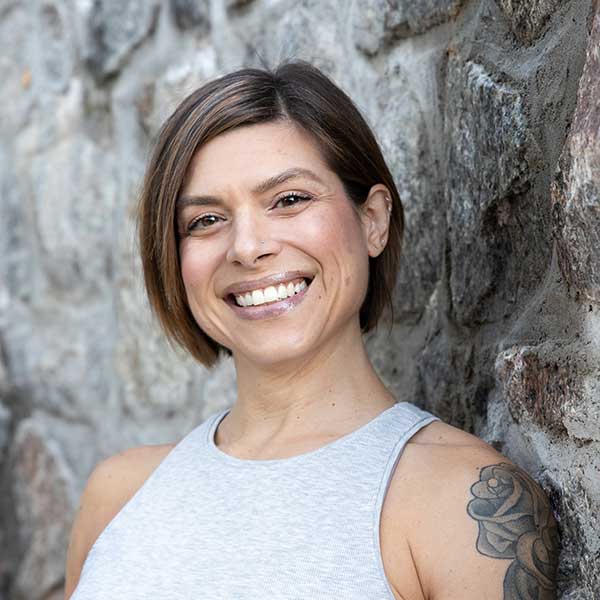Practice the 8 Limbs of Yoga to Address the 5 Layers of Being
 The Eight Limbs of Ashtanga Yoga:
The Eight Limbs of Ashtanga Yoga:
- Yamas: Non-harming, Truthfulness, Non-stealing, Moderation, Non-attachment
- Niyamas: Cleanliness, Contentment, Self-discipline, Self-study, Surrender
- Asanas: Postures
- Pranayama: Expansion of vital life force a.k.a. breathing practices
- Pratyahara: Withdrawal from the senses
- Dharana: Concentration
- Dhyana: Meditation
- Samadhi: Nirvana
According to yogic philosophy, the true self, the soul, is surrounded by five koshas, or layers. The eight limbs of yoga, affect all of the koshas:
Annamaya Kosha
This is the outermost layer. It’s the physical body, a.k.a. the gross body. The third limb, Asanas, are all about Annamaya kosha. For most of us, this is probably what originally brought us to yoga. Whether to build strength, improve flexibility, or to ease pain and tension; we were coming to yoga to take care of our first kosha. Since Anna means food, we can also nourish this layer with the food we eat.
Pranamaya Kosha
This is the first of three layers collectively called the subtle body. Prana, our vital life force, connects body and mind. Practicing the forth limb, breathing techniques like Ujjayi Pranayama, along with poses or on its own, cultivates this kosha. Prana is supplied by the air we breathe and the food we eat. It’s important to go outside, get plenty of fresh air and sunshine, and to eat fresh, healthy, unprocessed foods.
Manomaya Kosha
Still the subtle body, this is the first of the two mind koshas. Mano means mind. We share this layer with animals. It’s our nervous system: sensory and motor neurons, reflexes, and fight-or-flight response. This is where we find habits, addictions, patterns, and our stories. These are called samskaras in yoga. They are the paths that are worn so deep we can see no other way. To break an addiction, whether it’s to sugar, drama, or shopping, or rewrite the stories we are telling ourselves, we need to practice Pratyahara and Dharana, the fifth and sixth limbs. These are the precursors to meditation. Pratyahara is withdrawal from the senses. Rather than being carried away by every thought or sensation in the body, we instead concentrate our attention (Dharana) on an object such as the flame of a candle or on our own breath. It’s only through stepping out of the cascade of thoughts that we can actually see them as thoughts rather than reality. This allows us to make better choices and to respond rather than react reflexively.
Vijnanamaya Kosha
The next layer of the mind is what sets us apart from animals. It’s our intellect, willpower, ethics, and moral. These are address by the first two limbs, the Yamas and the Niyamas. Vijnanamaya is also our awareness, creativity, and intuition. We access this deep knowing through the seventh limb, Dhyana, meditation.
Anandamaya Kosha
Finally, the deepest layer is the one that is closest to our true self, our soul. It is referred to as the causal body because it motivates the creation of the subtle and gross bodies. Ananda means bliss. We are in touch with this kosha when we’ve gone beyond an intellectual knowing of our bliss to feeling that we are bliss. We must lose ourselves completely to experience this state. We can do that by peeling back the layers with the first seven limbs of yoga until we arrive at Samadhi (nirvana). Or we can find our bliss through Karma Yoga, selfless service, or through Bhakti Yoga, the yoga of devotion; losing ourselves in the connection to others or to something higher than ourselves.
Have you been hesitant to practice limbs other than poses? Do you feel like you’re “stuck” in one of the koshas? Having a well-rounded practice is key to experiencing all of the benefits yoga has to offer our whole being.
Alicia Cross is a Certified Personal Trainer, Wellness Coach, and Yoga Instructor with more than 15 years’ experience working with clients in classes and one-on-one. She is a yogi, meditator, vegan, and lifter of heavy things. If you’re ready to discover the strength and peace that comes from within, email Alicia@AliciaCrossTraining.com.
Related posts:


